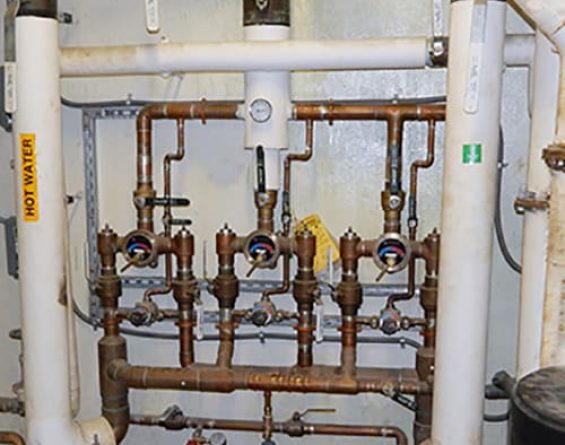Balancing Collaboration and Accountability: How Construction Administration Protects Healthcare Projects in the Nation’s Most Complex Environments
December 15, 2025

Kevin Hunter
In July 1976, over 2,000 members of the American Legion met in Philadelphia for their annual convention, timed to coincide with America’s bicentennial. Soon after the convention, several members cited experiencing exhaustion, chest pain, lung congestion and fever. Within a week, 25 members had died of an assumed heart attack. The CDC would later identify the cause of the outbreak as Legionella pneumophila, now commonly known as Legionnaires Disease. The Legionella bacterium causes pneumonia-like respiratory diseases through the inhalation/aspiration of contaminated water. In the Philadelphia outbreak, the bacterium bred in a water tower before feeding the air conditioning system.
Outbreaks can occur because of poorly maintained domestic and industrial water systems. Water temperature fluctuations and water stagnation often facilitate further growth. In remodel work, our survey always makes a point of identifying dead-legs, long runs of piping that are capped off, leaving the water unable to circulate and thus unable to maintain proper temperatures. This creates a perfect breeding ground for the Legionella bacterium.
If you have been involved with plumbing in the health care industry, then you know the challenges of factoring in for Legionella, especially if it’s a remodel. The plumbing codes provide guidelines for dealing with Legionella, but they are not mandated. The VA acts as an exception to this by mandating* water temperature minimums designed to prevent the growth of the Legionella bacteria. The VA water temperature mandates would also be great practice in non-VA applications.
While Legionella bacteria growth increases in tepid water in a range from 68°F – 123°F. This creates a dilemma in keeping water hot enough to prevent Legionella growth and balancing the high temperature needed with the risk of scalding the end user. To walk this line, The VA requires the storage tank temperature be maintained at a minimum of 140°F, and that the water in the potable hot water distribution system be maintained no lower than 124°F.
A master Thermostatic Mixing Valve (TMV) at the water heater is a good start to meeting VA water temperature requirements. This will combine cold and hot water to produce the desired temperature. A TMV that conforms to ASSE (American Society of Safety Engineers) 1017 is a good choice. However, with in-line temperatures that can scald (again 124°F is only the bare minimum!) don’t forget the need for a good point of use TMV as well, such as one that conforms to ASSE 1070, to bring that temperature back down to a safe level for the end user. A point of use TMV will help maintain a constant, safe temperature, even with variations in hot and cold-water supply temperatures. As well, it will allow the water heater to be operated at higher temperatures, further helping prevent the growth of Legionella.
In short, to help protect a plumbing system from developing Legionella, the proper use of TMV’s along with a good hot water recirculation system is a must.
*(Veterans Health Administration – Directive 1061, Appendix A, Sec. 2 Engineering Control Strategies and Limits for Ongoing Prevention of Legionella Growth)

